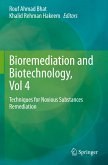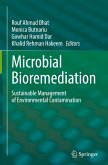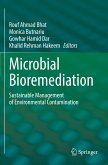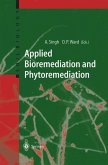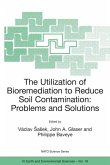The impact of pollution on the environment has emerged as a particularly critical area of research in recent years. The Handbook of Environmental Engineering is a collection of methodologies that study the effects of pollution and waste in their three basic forms: gas, solid, and liquid. In this invaluable volume, Volume 11: Environmental Bioengineering, expert researchers explore the engineering applications of biotechnologies.A sister volume to Volume 10, Environmental Biotechnology, this work introduces such essential and varied topics as land disposal of biosolids, heavy metal removal by crops, pre-treatment and bio-treatment of sludge, fermentation of kitchen garbage, phyotoremediation for heavy metal contaminated soils, bioremediation, wetland treatment, biosorption of heavy metals, and rotating biological contactors (RBC) for carbon and nitrogen removal. A critical volume in the Handbook of Environmental Engineering series, chapters employ methods of practical design and calculation illustrated by numerical examples, include pertinent cost data whenever possible, and explore in great detail the fundamental principles of the field.
Comprehensive and groundbreaking, Volume 11: Environmental Bioengineering presents innovative solutions to some of the most recent and significant pollution problems that the world is facing today.
The past 30 years have seen the emergence of a growing desire worldwide that positive actions be taken to restore and protect the environment from the degrading effects of all forms of pollution - air, water, soil, and noise. Since pollution is a direct or indirect consequence of waste production, the seemingly idealistic demand for "zero discharge" can be construed as an unrealistic demand for zero waste. However, as long as waste continues to exist, we can only attempt to abate the subsequent pollution by converting it to a less noxious form. Three major questions usually arise when a particular type of pollution has been identi ed: (1) How serious is the pollution? (2) Is the technology to abate it available? and (3) Do the costs of abatement justify the degree of abatement achieved? This book is one of the volumes of the Handbook of Environmental Engineering series. The principal intention of this series is to help readers formulate answers to the above three questions. The traditional approach of applying tried-and-true solutions to speci c pollution problems has been a major contributing factor to the success of environmental engineering, and has accounted in large measure for the establishment of a "methodology of pollution control. " However, the realization of the ever-increasing complexity and interrelated nature of current environmental problems renders it imperative that intelligent planning of pollution abatement systems be undertaken.
Comprehensive and groundbreaking, Volume 11: Environmental Bioengineering presents innovative solutions to some of the most recent and significant pollution problems that the world is facing today.
The past 30 years have seen the emergence of a growing desire worldwide that positive actions be taken to restore and protect the environment from the degrading effects of all forms of pollution - air, water, soil, and noise. Since pollution is a direct or indirect consequence of waste production, the seemingly idealistic demand for "zero discharge" can be construed as an unrealistic demand for zero waste. However, as long as waste continues to exist, we can only attempt to abate the subsequent pollution by converting it to a less noxious form. Three major questions usually arise when a particular type of pollution has been identi ed: (1) How serious is the pollution? (2) Is the technology to abate it available? and (3) Do the costs of abatement justify the degree of abatement achieved? This book is one of the volumes of the Handbook of Environmental Engineering series. The principal intention of this series is to help readers formulate answers to the above three questions. The traditional approach of applying tried-and-true solutions to speci c pollution problems has been a major contributing factor to the success of environmental engineering, and has accounted in large measure for the establishment of a "methodology of pollution control. " However, the realization of the ever-increasing complexity and interrelated nature of current environmental problems renders it imperative that intelligent planning of pollution abatement systems be undertaken.



